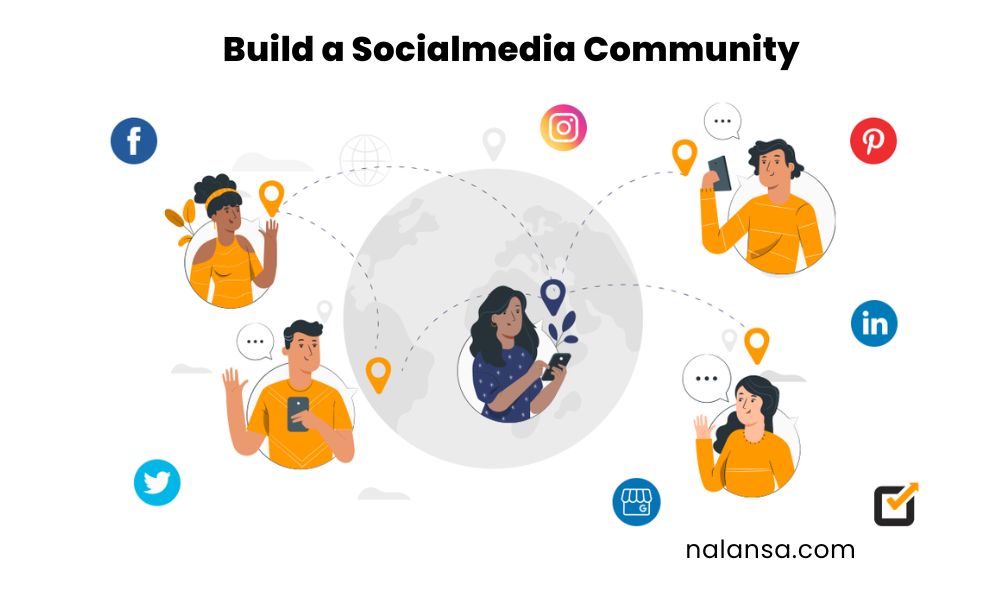Building a successful brand is the holy grail of business success. But, with so many companies vying for attention, creating a brand that truly stands out can seem like an insurmountable task. However, with the right strategies and techniques, you can establish a brand that resonates with your target audience and sets you apart from the competition. In this article, we’ll take you on a step-by-step journey to help you build a successful brand that drives business results. From defining your unique value proposition to crafting a compelling brand message, we’ll cover the essential elements you need to know to create a brand that truly thrives. So, let’s dive in and explore the art of building a successful brand that leaves a lasting impression.
What is Brand?
A brand is the culmination of various elements that come together to create a unique identity. This includes a visual identity, such as logos, colors, and typography, as well as a tone and voice that reflects the brand’s communication style. A brand’s values and mission serve as its purpose and principles, while its personality is made up of human-like traits that make it relatable. A brand’s promise is its unique value proposition, and the emotions it evokes are the feelings customers have when interacting with it. Finally, a brand’s reputation is shaped by its experiences and the perceptions of others. When all these elements come together, they create a brand that is more than just a name or logo – it’s a living, breathing entity that resonates with customers.
Why Branding is Important?
- Establishes Trust and Credibility : Building a brand helps you gain trust and credibility with your audience. It shows you’re professional, stable, and expert in your field.
- Differentiates You from Competitors : A unique brand identity sets you apart from others. It helps you attract and keep customers by showing them what makes you special.
- Creates Emotional Connections : A well-crafted brand strategy helps you connect with your audience on a deeper level. You’ll understand their needs and desires, and they’ll love your brand for it.
- Increases Brand Recognition and Loyalty : A strong brand is memorable and recognizable. It helps you build a loyal customer base and keeps them coming back for more.
- Supports Business Growth and Expansion : A solid brand foundation helps you grow and adapt to changing markets. You’ll stay focused on your goals and values.
- Enhances Reputation and Credibility : A professional brand image boosts your reputation and credibility. It opens doors to new customers, partners, and opportunities.
- Helps Build a Loyal Community : A well-defined brand helps you build a loyal community. You’ll create a sense of belonging and shared values that drives business success.
How to Build a Successful Brand?
Creating a successful brand goes beyond just having an attractive logo or memorable name. A brand is an experience and a story that customers resonate with and trust over time. If you’re looking to build a brand that genuinely stands out, it’s essential to follow a structured approach. This guide breaks down the key steps needed to establish a brand that is authentic, memorable, and positioned for long-term success. These are also involves Personal branding. Whether you’re launching a new venture or revamping an existing one, each step is crafted to help you develop a brand that connects with your audience on a deeper level.
1. Define Your Brand Purpose and Vision
Every successful brand begins with a well-defined purpose and vision.
Your brand’s purpose is the reason why it exists and the unique value it brings to the market. A clear purpose gives direction to your brand’s messaging, decisions, and future goals. Take time to ask yourself questions like:
- What unique problem does my brand solve?
- What values drive our mission and vision?
- How do we want our customers to feel?
A compelling brand purpose goes beyond just selling a product or service; it aims to make a real difference in people’s lives. Studies show that 89% of consumers are more inclined to support brands that stand for something meaningful.
2. Research Your Target Audience for Successful brand
Understanding your audience is the foundation of effective branding.
To connect meaningfully, it’s essential to understand exactly who your audience is. Defining your target audience involves understanding their demographics, preferences, challenges, and goals. Think about what your ideal customer looks like, their age, interests, and what problems they might need solving. Tools like surveys, focus groups, and market research can give valuable insights into what your audience is looking for in a brand.
Related : How to Find Your Target Audience and Grow Your Business
This targeted understanding allows you to craft messages that resonate, creating a brand that feels relevant and personalized. In fact, 63% of consumers now expect personalized experiences. When you know your audience well, you can create experiences and messaging that make customers feel like your brand was made just for them.
3. Conduct Competitor Analysis for Successful brand
Knowing what your competitors are doing helps you carve a unique position in the market.
By studying your competitors, you can understand their strengths and weaknesses, as well as potential gaps in the market. This doesn’t mean copying what they’re doing-it’s about identifying what makes your brand distinct. Analyzing the top competitors can help you understand current trends, pricing, and customer expectations, and give you insights on how to differentiate your brand in a crowded market.
More than 80% of companies that regularly monitor competitors report that they can develop better strategies as a result. Positioning your brand to highlight what only you can offer ensures that your audience understands the unique value you bring to the table.
4. Craft a Unique Brand Identity for Successful brand
Your brand’s visual identity is one of the first impressions it makes.
A strong brand identity includes your logo, color scheme, typography, and overall visual style. Choose colors, fonts, and design elements that align with the values and personality of your brand. Every element should work together to create a consistent and cohesive look. The best brands are those that are instantly recognizable and make a lasting impression.

Studies show that color alone can boost brand recognition by up to 80%. When you have a well-defined and memorable brand identity, your audience is more likely to recall and engage with your brand repeatedly.
5. Create a Cohesive and Authentic Brand Voice for Successful brand
Your brand’s voice is the personality it projects to the world.
Whether it’s formal, friendly, humorous, or compassionate, your brand’s tone should align with its values and resonate with your audience. A clear and consistent voice builds familiarity and trust over time. For example, if your brand is aimed at young professionals, you might adopt a modern and straightforward tone, whereas a wellness brand might use a calming and encouraging voice.
More than 50% of consumers report that they will unfollow or disengage from a brand if its voice doesn’t align with their values. Documenting clear guidelines for your brand’s tone and language ensures a consistent voice across every platform.
6. Create Value-Driven Content for Successful brand
Content is one of the most effective ways to connect with your audience and showcase your brand’s value.
Develop content that is informative, entertaining, or solves a problem for your audience. Value-driven content can include blog articles, videos, social media posts, podcasts, and newsletters. Every piece of content should serve a purpose and reflect your brand’s core values and identity.
Studies show that 70% of consumers prefer learning about a brand through content rather than traditional advertising. By providing value upfront, you can build trust with your audience and position your brand as an authority in your industry.
7. Leverage Social Media to Build Community
Social media is a powerful tool for fostering brand loyalty and building a strong community.
Pinpoint where your target audience engages online, and concentrate your efforts on those specific platforms. Social media offers an interactive way to share your brand’s story, showcase your products, and connect with customers on a personal level. Use it to engage with followers, respond to questions, and even showcase behind-the-scenes moments that humanize your brand.

53% of customers are likely to remain loyal to brands that actively engage with them on social media. A brand that builds a loyal community through genuine interaction stands out and earns the trust of its audience.
8. Build Strong Brand Partnerships
Collaborating with other brands can amplify your reach and credibility.
Look for partnerships with brands that align with your values and have a complementary audience. For instance, if you run a fitness brand, a partnership with a wellness company could add value for both audiences. Brand partnerships allow you to introduce your brand to new customers, create exclusive offers, and bring more value to existing customers.
According to surveys, 71% of marketers believe brand partnerships effectively expand their reach and audience engagement.
9. Encourage and Showcase Customer Testimonials
Customer feedback is one of the most powerful forms of social proof.
When potential customers see positive reviews and testimonials from satisfied clients, it boosts your credibility and reassures them of the value you provide. Actively encourage happy customers to leave reviews, and make it easy for them to do so. Showcasing testimonials on your website, social media, and other platforms can help build trust with new customers.
Reviews can increase conversion rates by as much as 270%, as they provide honest feedback and proof that your brand delivers on its promises.
10. Continuously Evaluate and Refine Your Brand Strategy
Markets, customer preferences, and trends change over time, and brands need to stay flexible to remain relevant. Regularly assess your brand’s performance by tracking key metrics like brand awareness, engagement, and customer loyalty. Stay open to making adjustments to keep your brand aligned with your customers’ evolving needs.
Research shows that 64% of brands that regularly assess and refine their strategies see an increase in customer loyalty and engagement.
Conclusion
In conclusion, building a successful brand is a continuous and rewarding journey. It requires understanding your audience, defining a unique identity, and consistently delivering value. Remember, effective branding is not just about creating a logo or a catchy tagline-it’s about building trust, connection, and loyalty with your customers. By following these steps and staying adaptable to changes, you can craft a brand that stands out and grows over time. With dedication and a focus on authenticity, your brand can become a trusted choice for your audience. So, take each step thoughtfully, and watch your brand evolve into something truly impactful.



